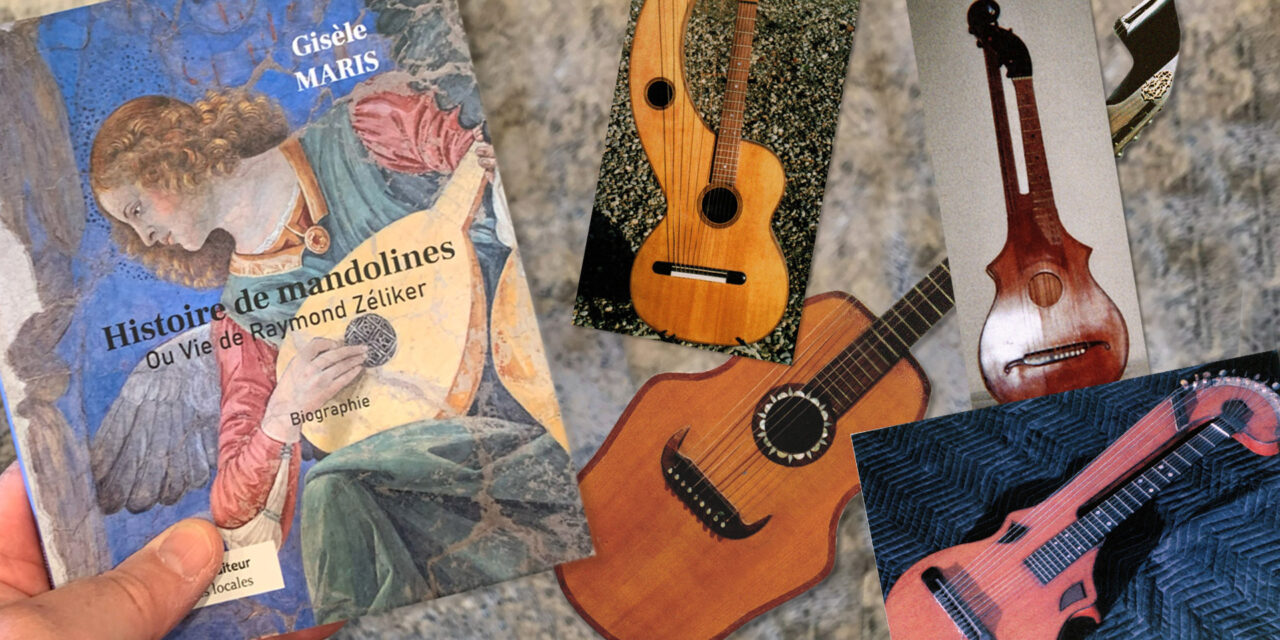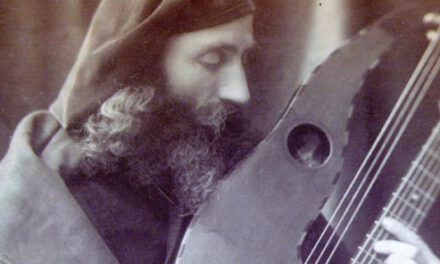
I always acknowledge that the best perk of running Harpguitars.net – and my entire musical hobby for that matter – is connecting with others whom I might otherwise never have crossed paths with. And nothing is more rewarding to me than collecting, sharing, and archiving their otherwise private stories, knowledge and ephemera. It is a huge part of our Harp Guitar Foundation’s charter, and each project feels like a new “personal best” for me.
And of course, the more we “give” (publish) through my web site(s), the more we receive (rare new material and knowledge).
One sphere of people within these unexpected connections are other private collectors, and you’ll see many of their stories on this site. Today, I’m presenting a short update about a recent one of these, the enigmatic (to us in the States) Raymond Zéliker. You’ll recall that I wrote about much of his collection being acquired by the Phoenix MIM, and what of it I could locate there on my last visit:
https://www.harpguitars.net/2024/06/10/amis-part-3-the-raymond-zeliker-collection/
I truly hope you enjoyed that trip write-up. You know who else did?
Gisele Maris, an author who writes books about local interest subjects in the Le Mans region. Mr. Zéliker recently suggested a small book about his life and instrument museum & collection, and they collaborated on the book, released last year. Anthony Chudeau (who had commented on my first post) wrote the Introduction.
I was in the very process of finding a source to purchase the book, when Ms. Maris’ granddaughter Marie wrote to ask me for my address; they wanted to send me a copy! This was in thanks for my article, and at the same time they were sending a slew of scanned printouts of additional harp guitars and other instruments from Mr. Zéliker’s own snapshots. These were other instruments that he had owned in his long full life of collecting (many that didn’t make it to Phoenix). Marie told me that Raymond is now 87, healthy and happy and living in a retirement home. She also extended Raymond’s invitation to come visit him anytime as he still loves to play violin (and harp guitar!) and loves to talk about the instruments. Perhaps local Le Mans readers would like to do so on my behalf (It will be some time before I can make arrangements).
Attached herein are some images with brief captions.
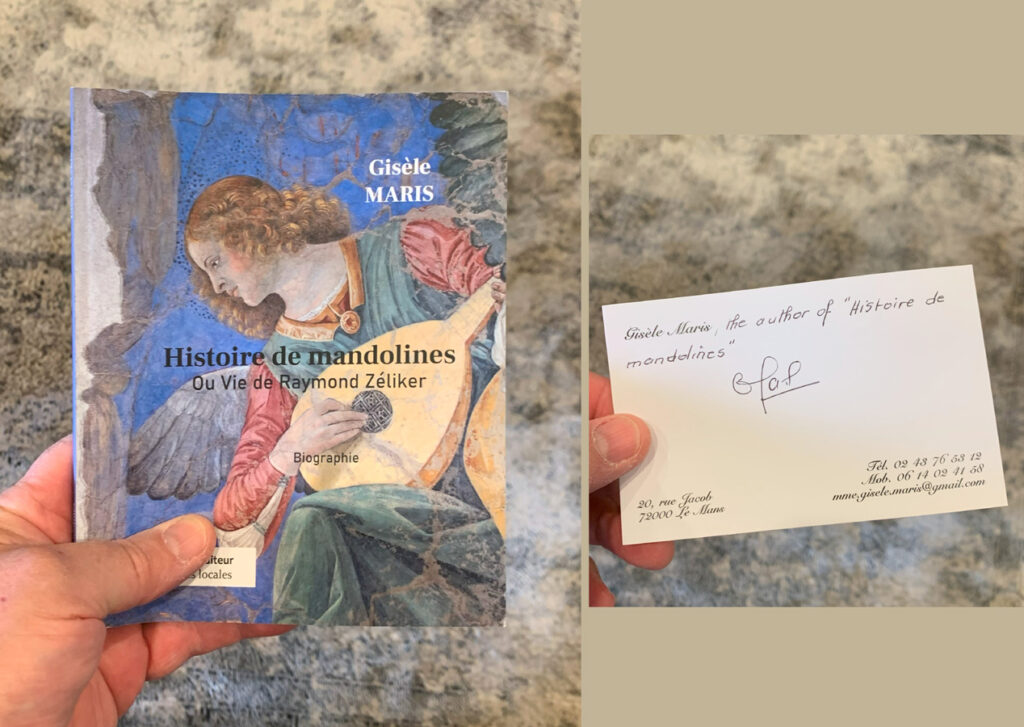
The book and included author card. It’s about 60 pages with around 40 color photos of Raymond’s life and instruments. It begins with his first instrument (a banjolin when he was young), his love of the mandolin, his creation of a local plucked stringed orchestra in 1977, his opening of his physical museum in Le Mans in 1994 (the one we all saw in 2013), and his attempt to have the city make that a permanent collection and museum. Apparently, they were unable or unwilling, thus Jean Michel Renard (who “sold him most of the instruments”) was hired to broker the sale (which he soon did).
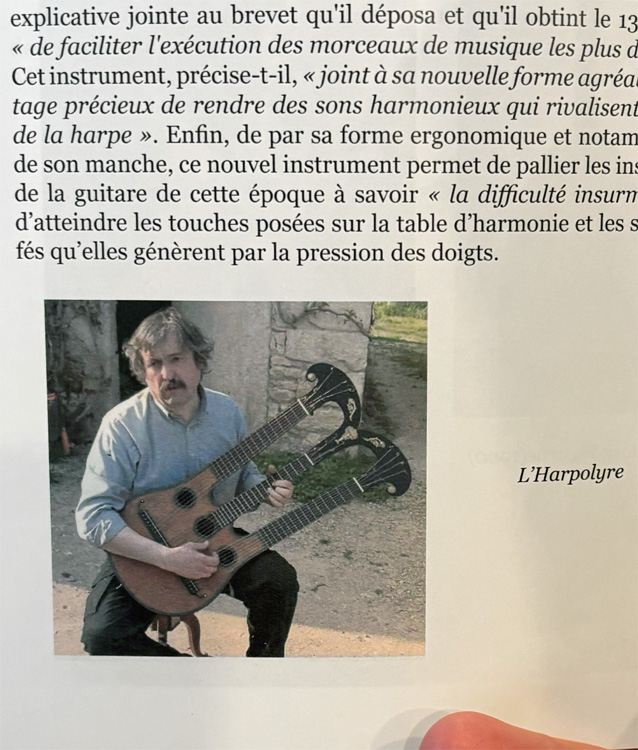
Here’s Jean Michel in the book with Raymond’s harpolyre. That instrument never made it to Phoenix, so is either still with Raymond or perhaps now JMR’s own collection.
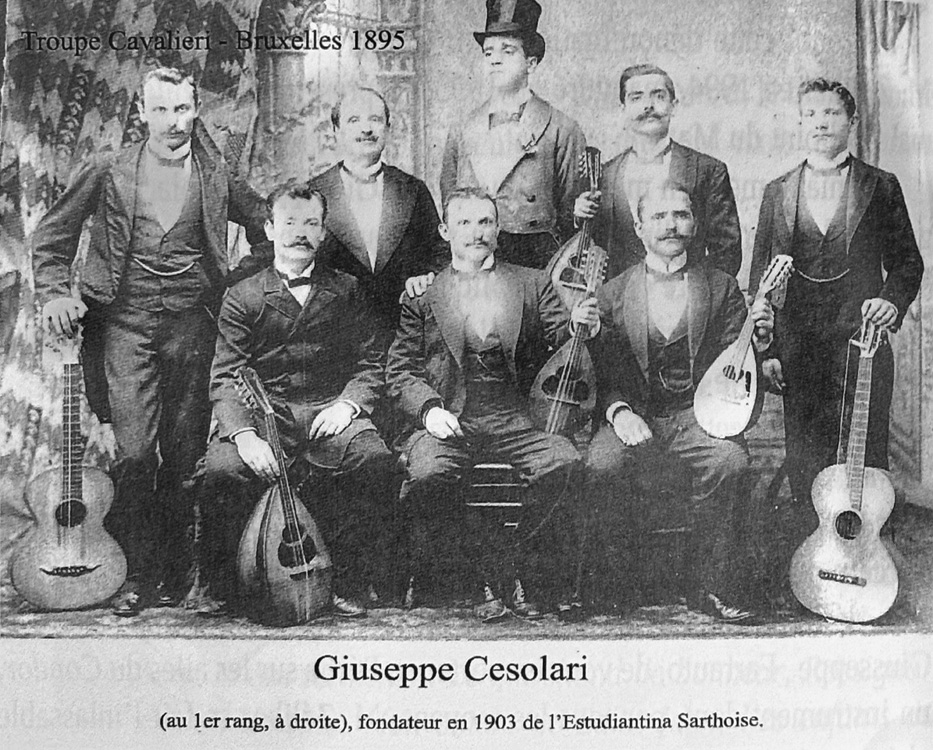
This 1895 image appears in the book. Looks like a home-made heptacorde on the right!
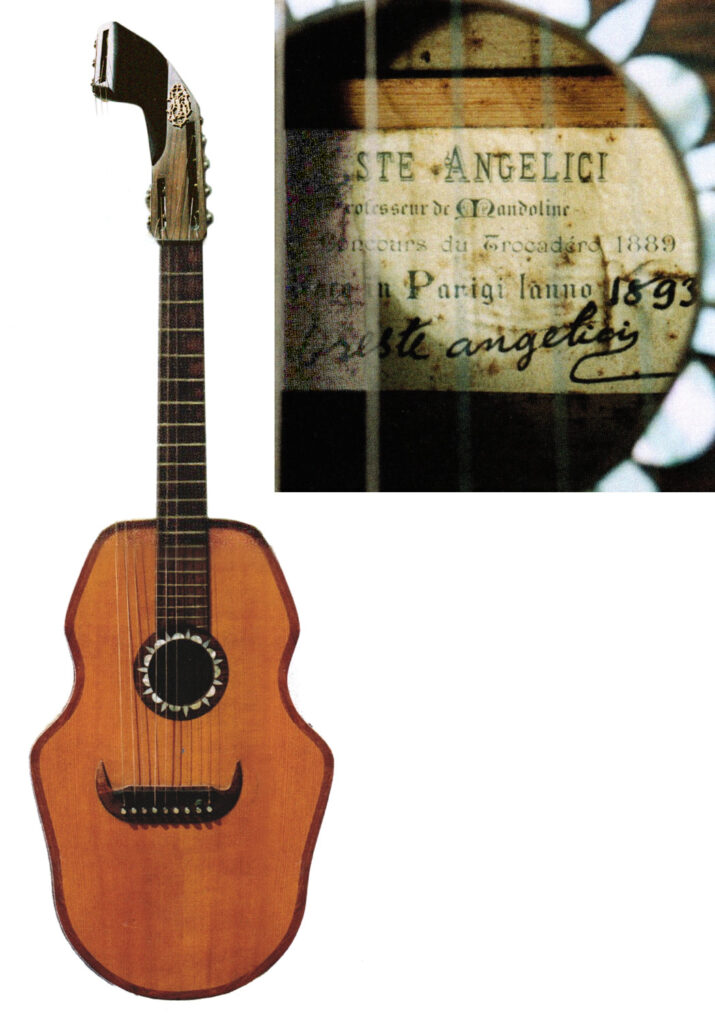
The best of Raymond’s scanned photographs (instruments he’s owned over the years) was this one – a new harp guitar maker for my encyclopedia…and a whole new shape!
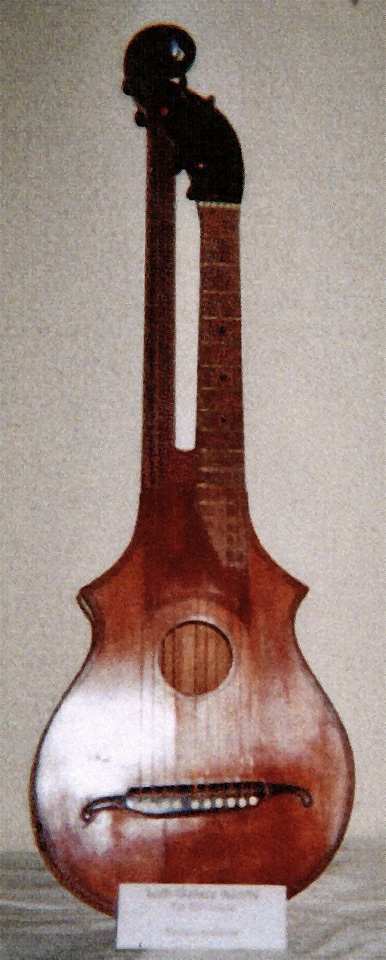
This small slender wappen-shaped harp guitar has an unusual single scroll headstock – much like those of Sweden’s Otto Selling.

I thought this was another typical German/Austrian bogen-gitarre, but it has seven strings on the neck – so built for the Russian market. Raymond’s notes say “1880” and he references Friedrich Schenk – so perhaps he was just noting the style. That bridge looks very non-original.

This one from Portugal is special because – unbeknownst to me – I was bidding against Raymond for it in 2004 at the Vichy Auction! Well, as his photo shows, he clearly beat me. No matter – I still wrote an article about it:
https://www.harpguitars.net/history/month_hg/month-hg-9-04.htm
In my article, I mention the original owner dating it 1916 with no provenance. Raymond dates it 1917 (again, the label only includes “191_”).

There were many other photo scans of mandolins and typical kontragitarres, etc.
Though small and grainy, I liked these two photos of Raymond in his museum, clearly proud of his efforts!
As he very much should be.

